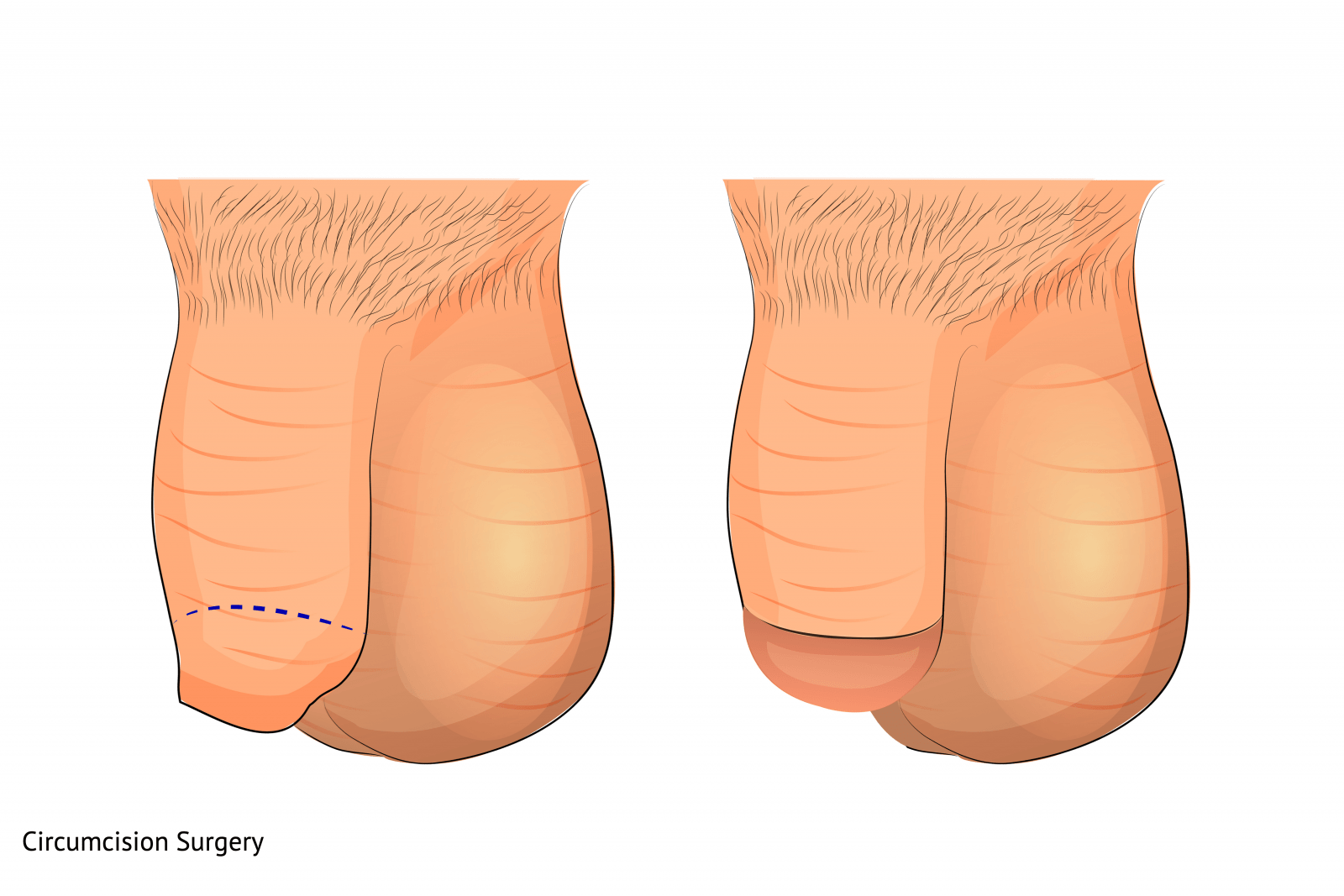What is Circumcision?
Male circumcision is a simple procedure in which the foreskin that covers the head of the penis is surgically removed. Since foreskin traps bacteria and other infectious agents, its removal may improve genital hygiene and reduce risk of disease for the male and his sexual partners.
Thus, circumcision is a personal decision that you must make with your partner after weighing the benefits and risks and it may often involve religious preferences as well. It may be a decision based on personal, cosmetic or health reasons.
Circumcision can be performed safely under local anaesthesia, almost as a painless surgical procedure.
Circumcision surgery can be generally divided into three groups:
1. Therapeutic Circumcision: is usually concentrated on teenager and adults, for a particular health reason.
2. Religious Circumcision: is mainly concentrated on newborn and young children, for religious reasons.
3. Cosmetic Circumcision: is mainly for adults and the aim is to improve the appearance of the penis which may in turn improve male function.
Male circumcision and the effect on sexual satisfaction
Many adults and parents are concerned that male circumcision will diminish male and possibly female sexual pleasure and satisfaction later in life. Recent studies show no evidence of this. A randomized controlled trial evaluated the question in 4456 sexually experienced adult males and found that male circumcision did not adversely affect sexual satisfaction or clinically significant function in men. These findings were confirmed in another large randomized controlled trial that found adult male circumcision was not associated with sexual dysfunction and that circumcised men reported increased penile sensitivity and enhanced ease of reaching orgasm. Another study showed that male circumcision had no adverse effect on female sexual satisfaction.
Hence, the existing evidence indicates that male circumcision is unlikely to adversely affect male sexual function or female sexual satisfaction.

Preputioplasty or prepuce plasty,
is a plastic surgical operation on the prepuce or foreskin of the penis, to widen a narrow non-retractile foreskin which cannot comfortably be drawn back off the head of the penis in erection because of a constriction or narrowing which has not expanded after adolesence.
Preputioplasty is a treatment for phimosis as an alternative to circumsion.
- It is more conservative, less traumatic and less invasive and is performed under local anaesthetic.
- has the advantage of healing quickly with little or no significant cosmetic alteration to the appearance of the penis.
- Preserves the penile foreskin.